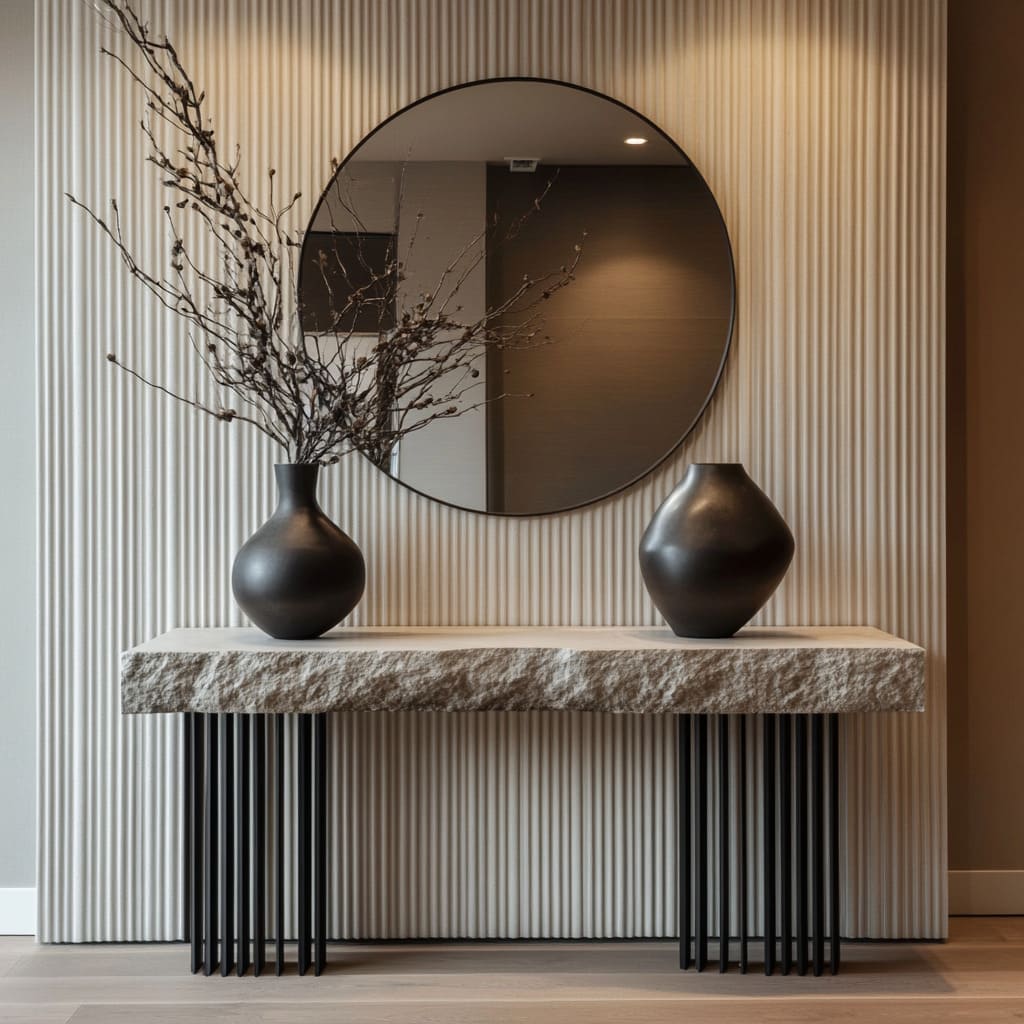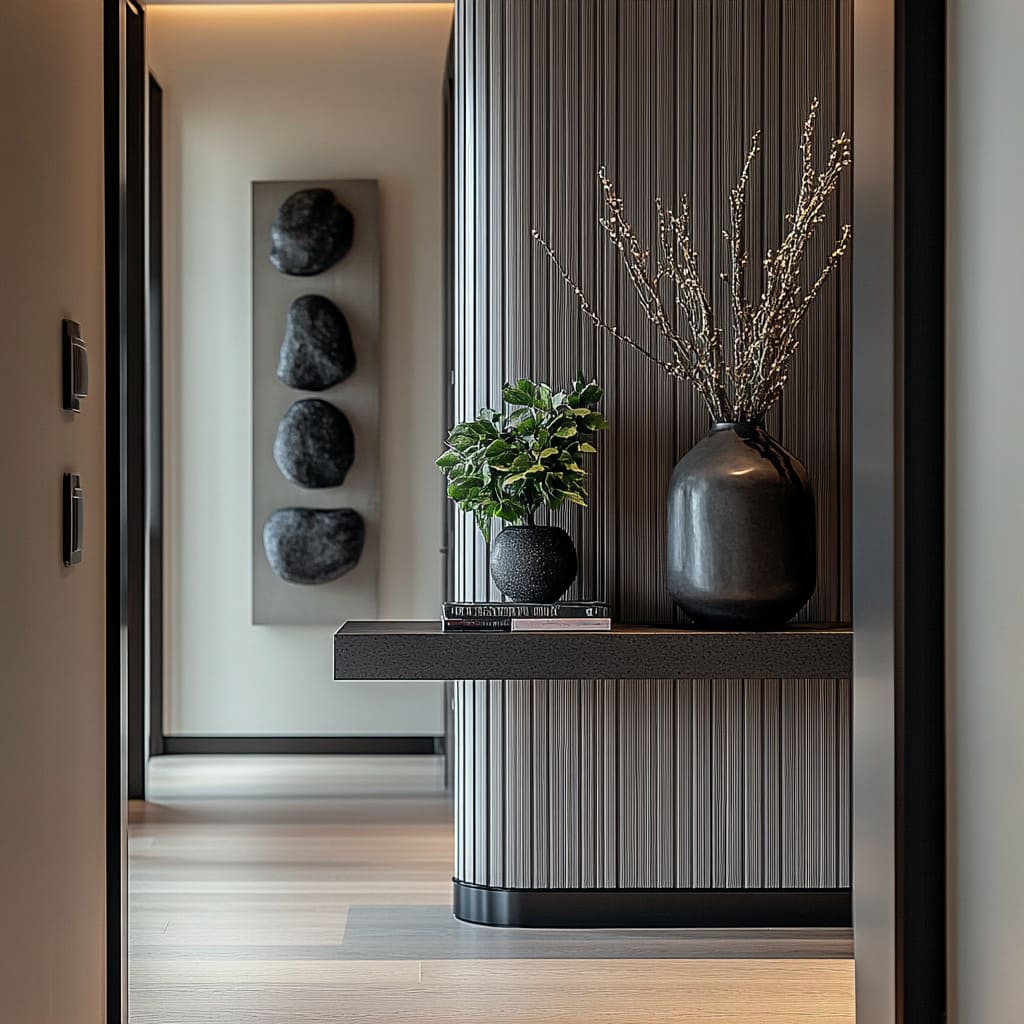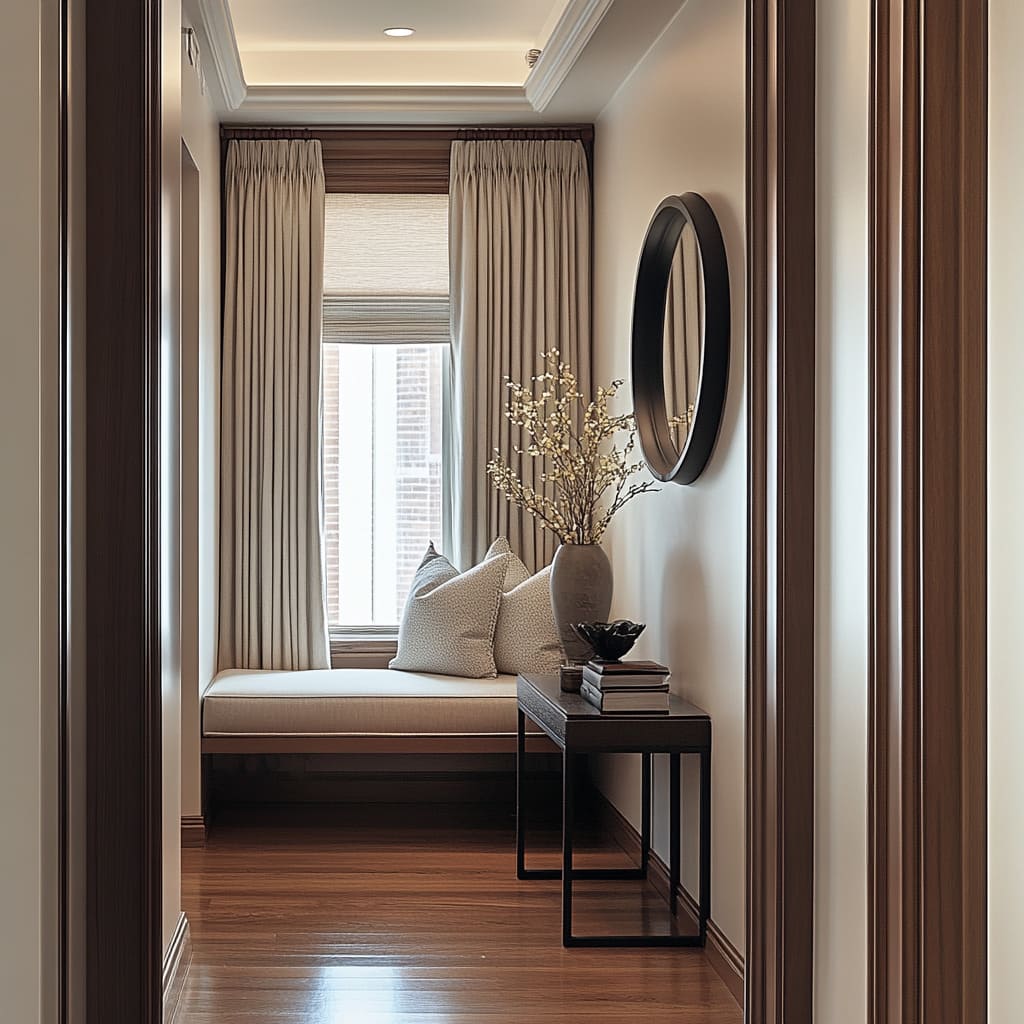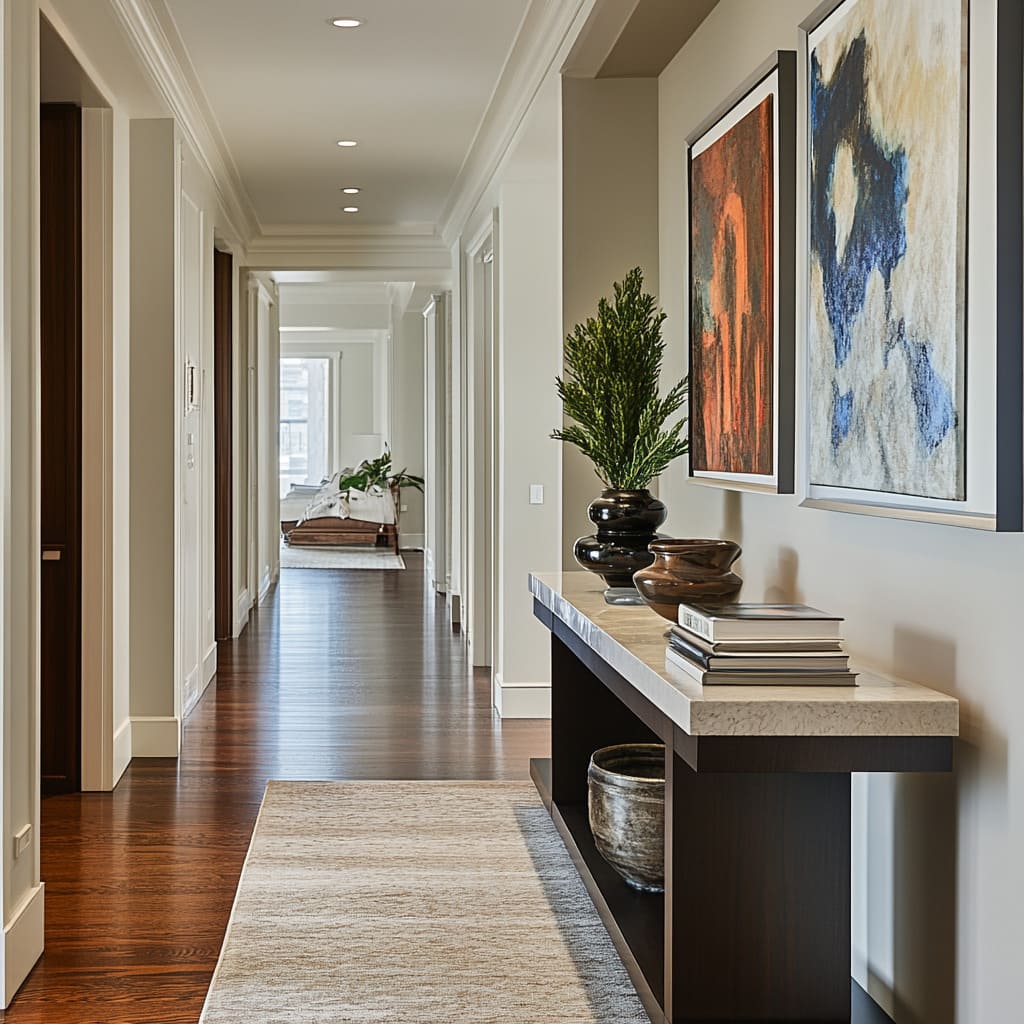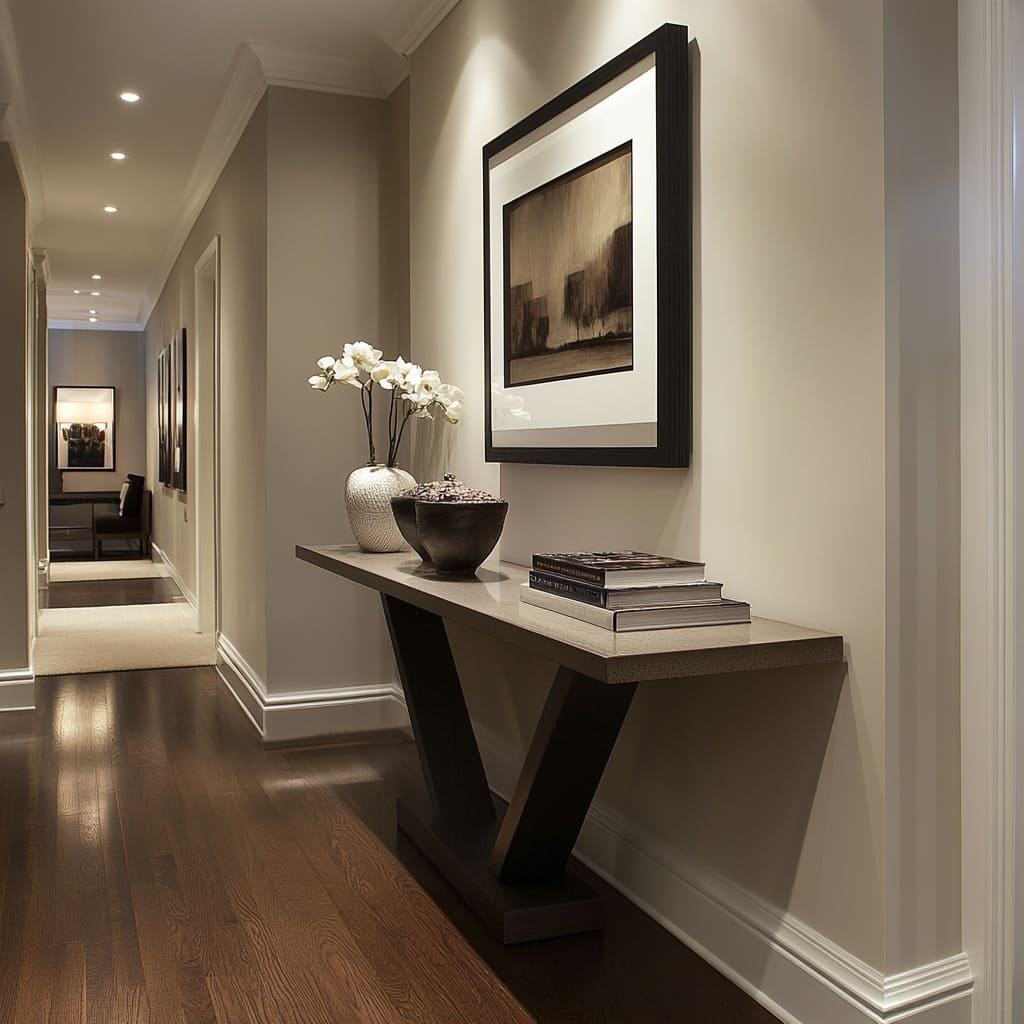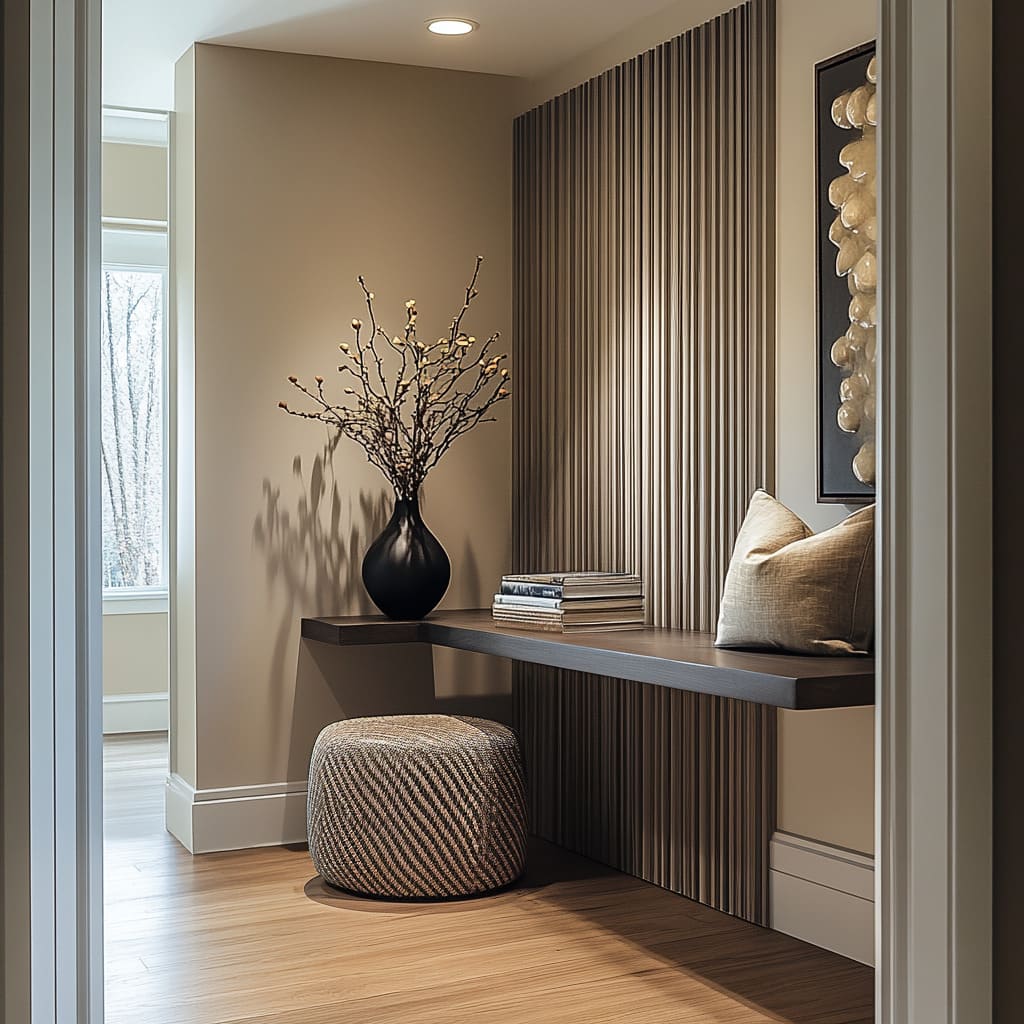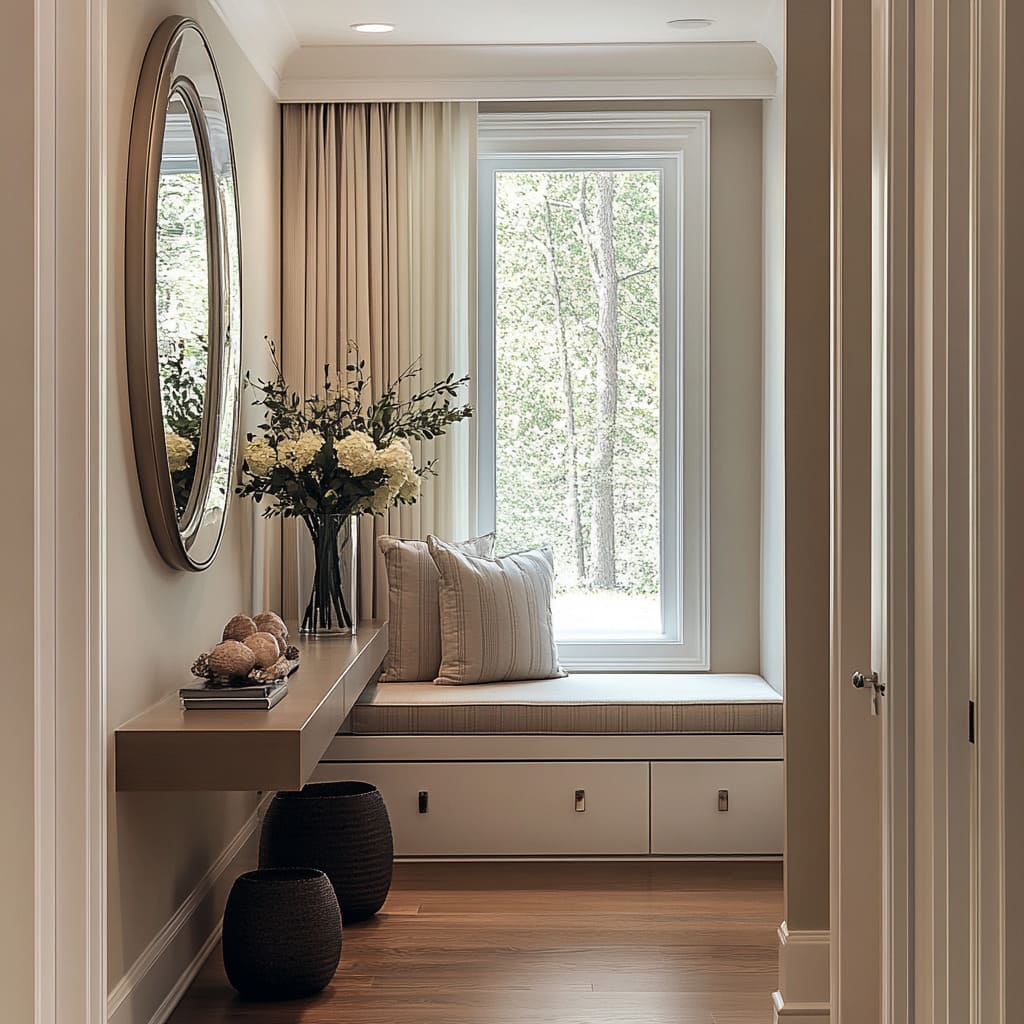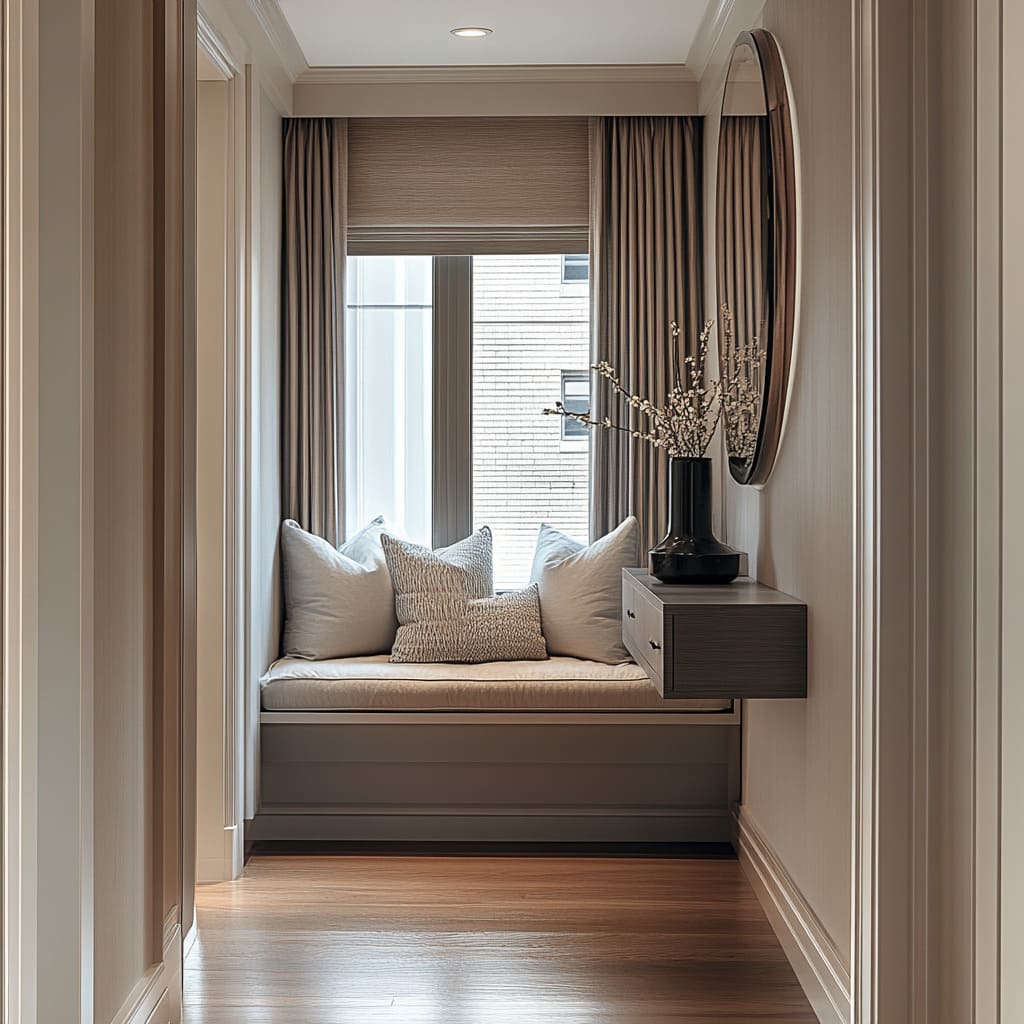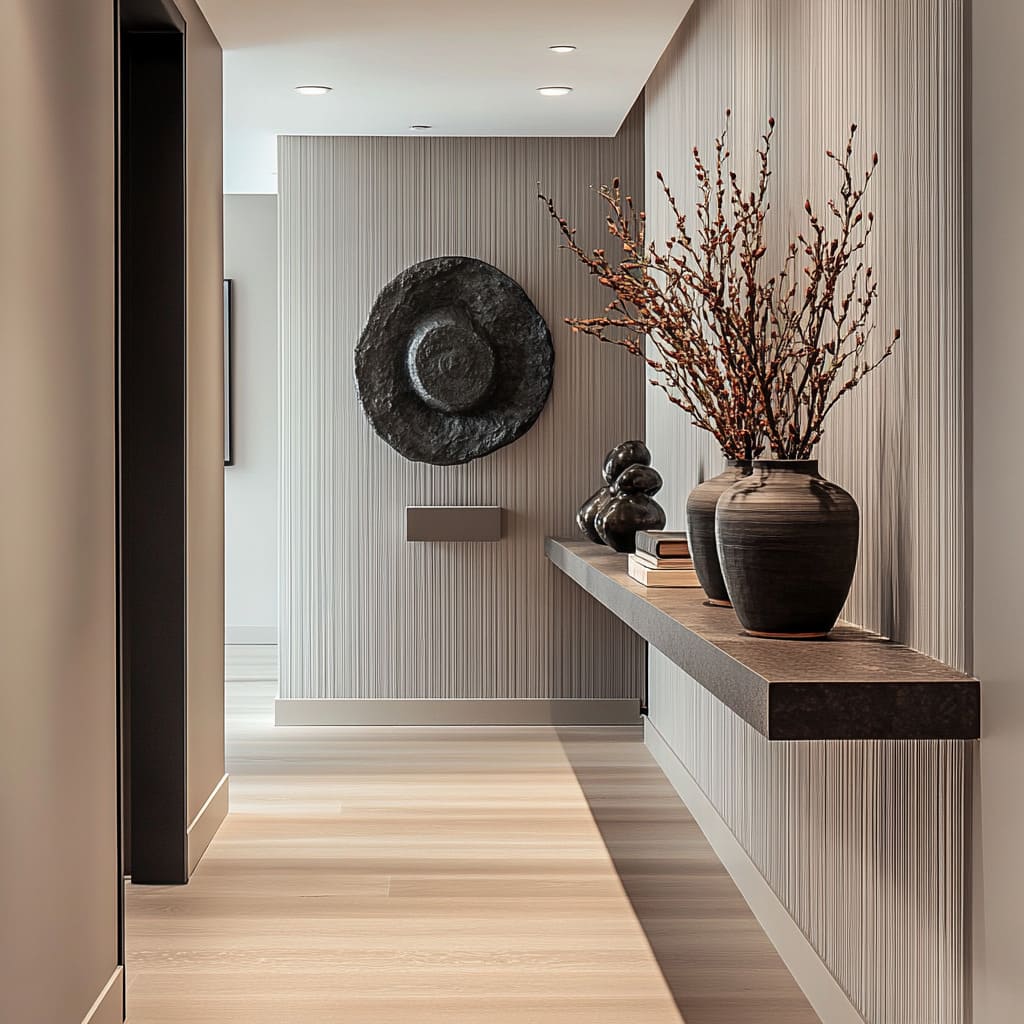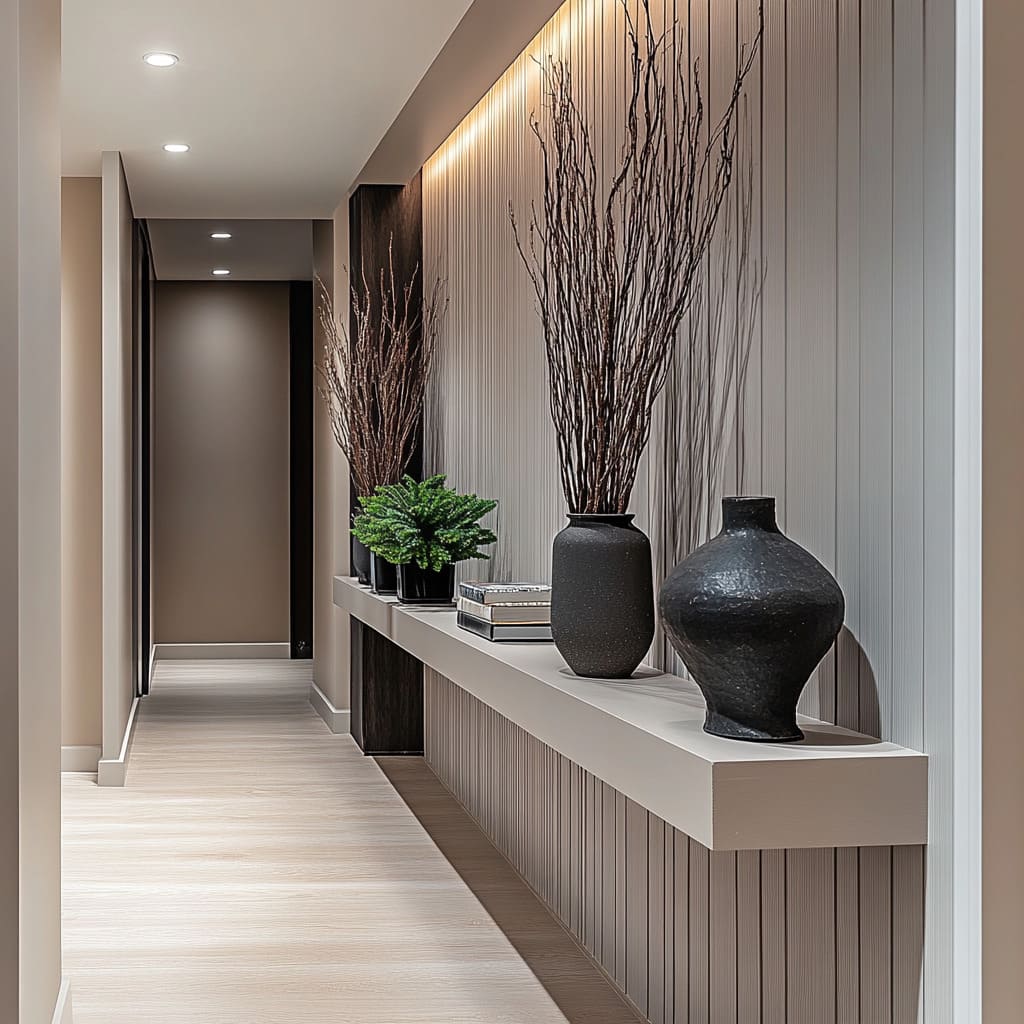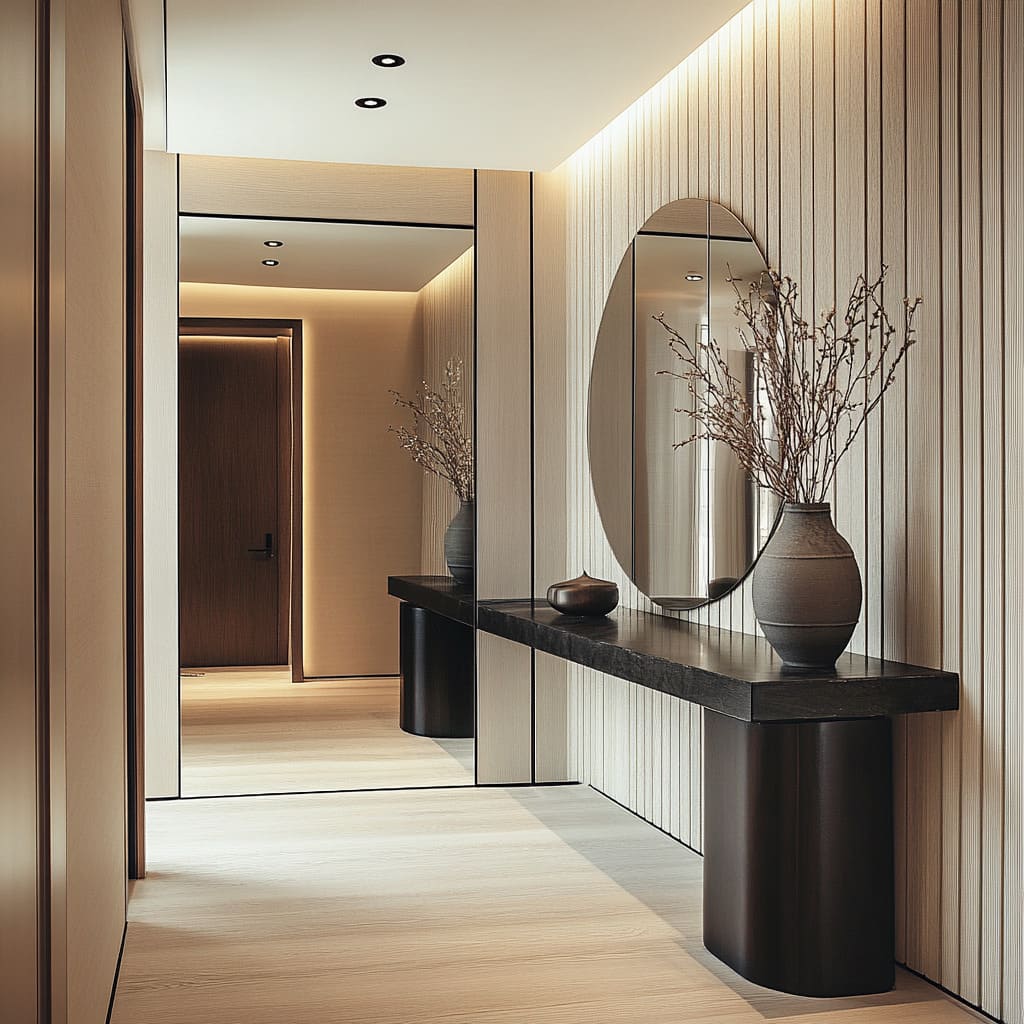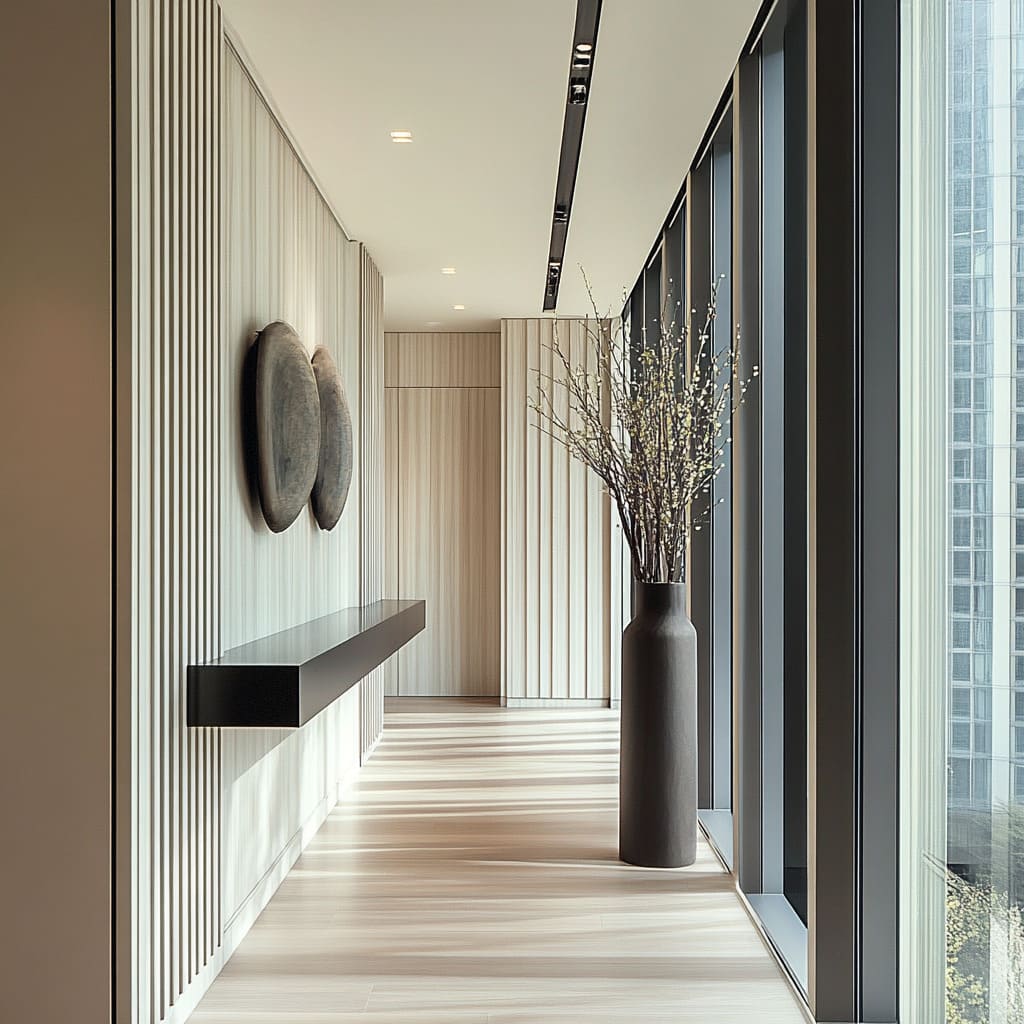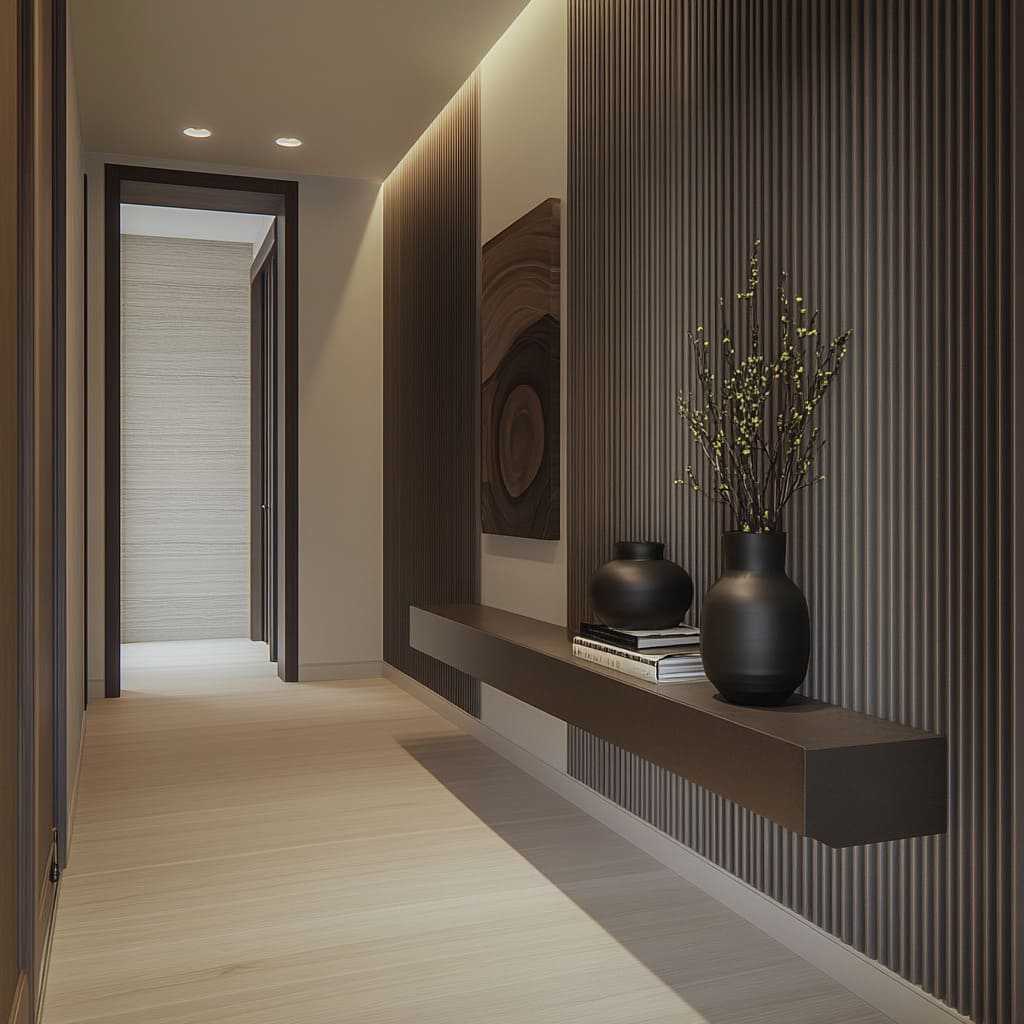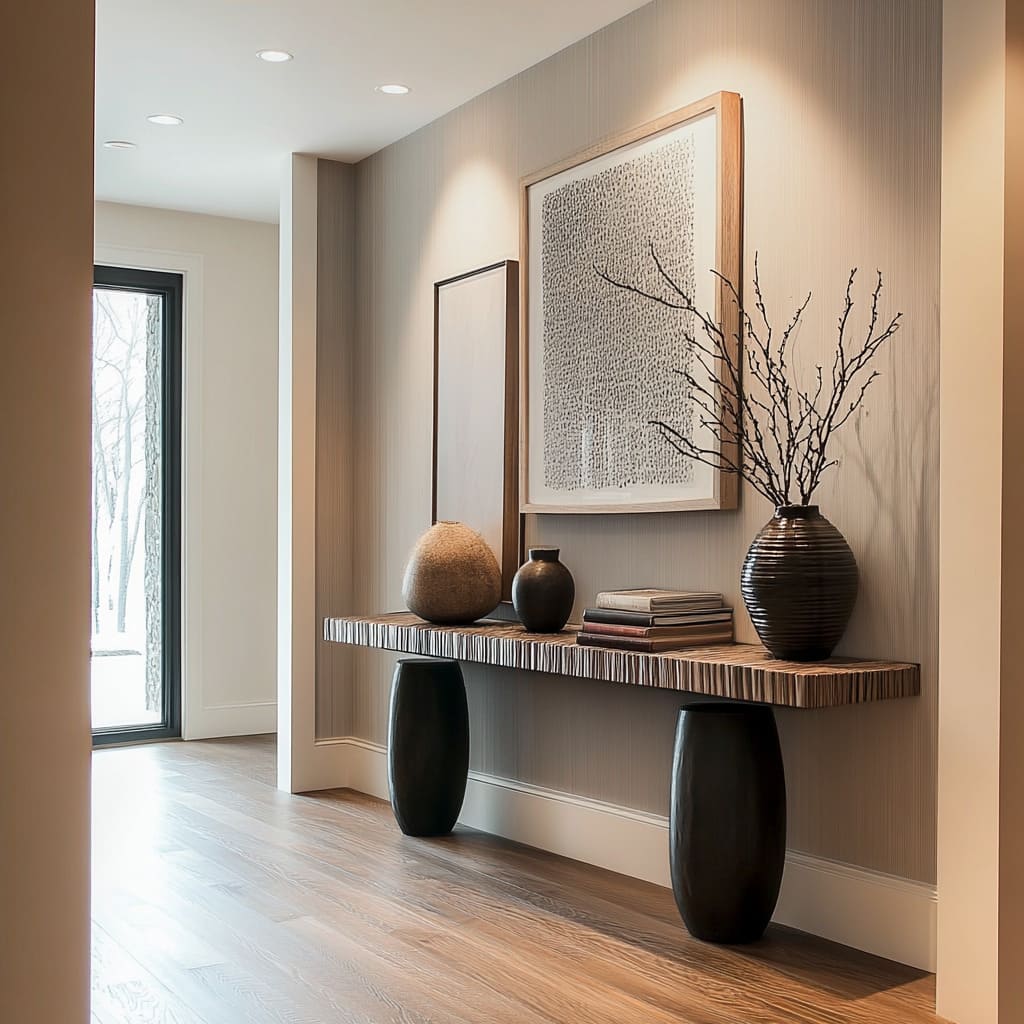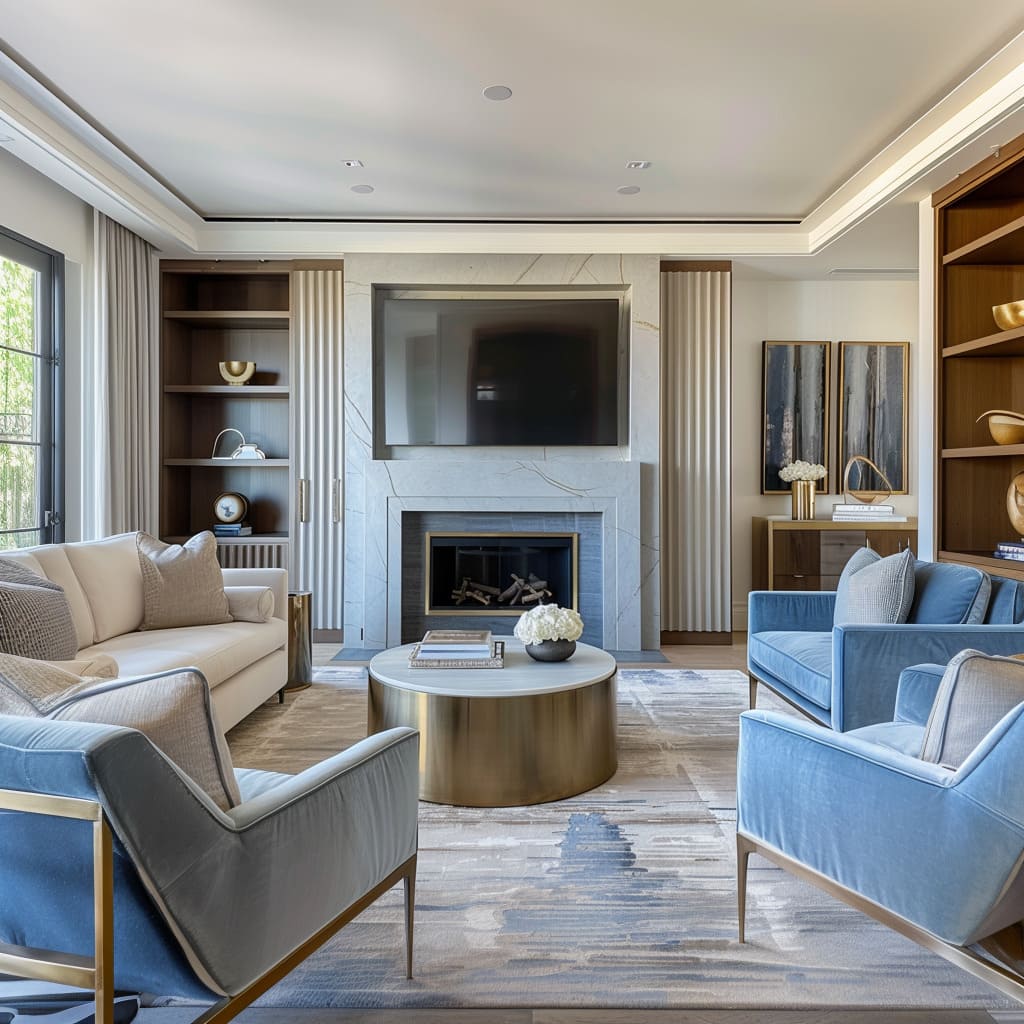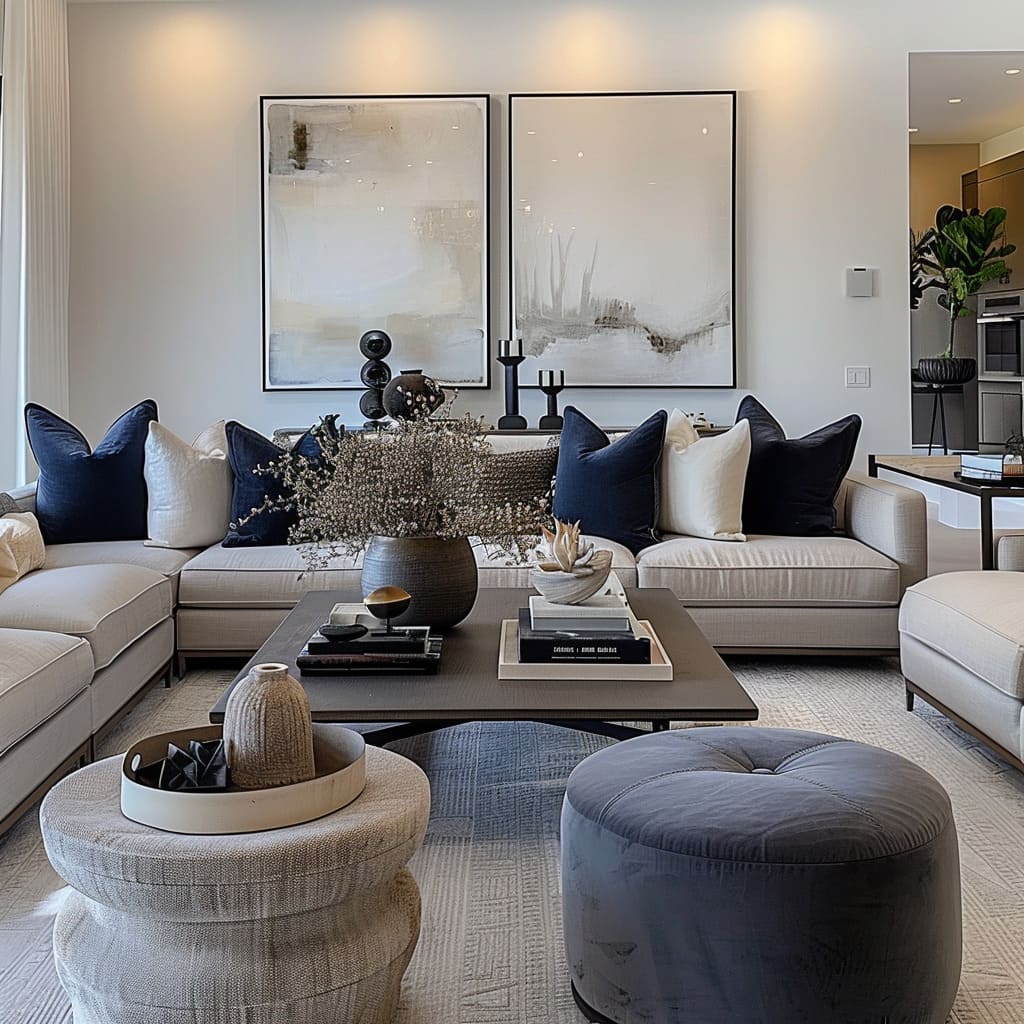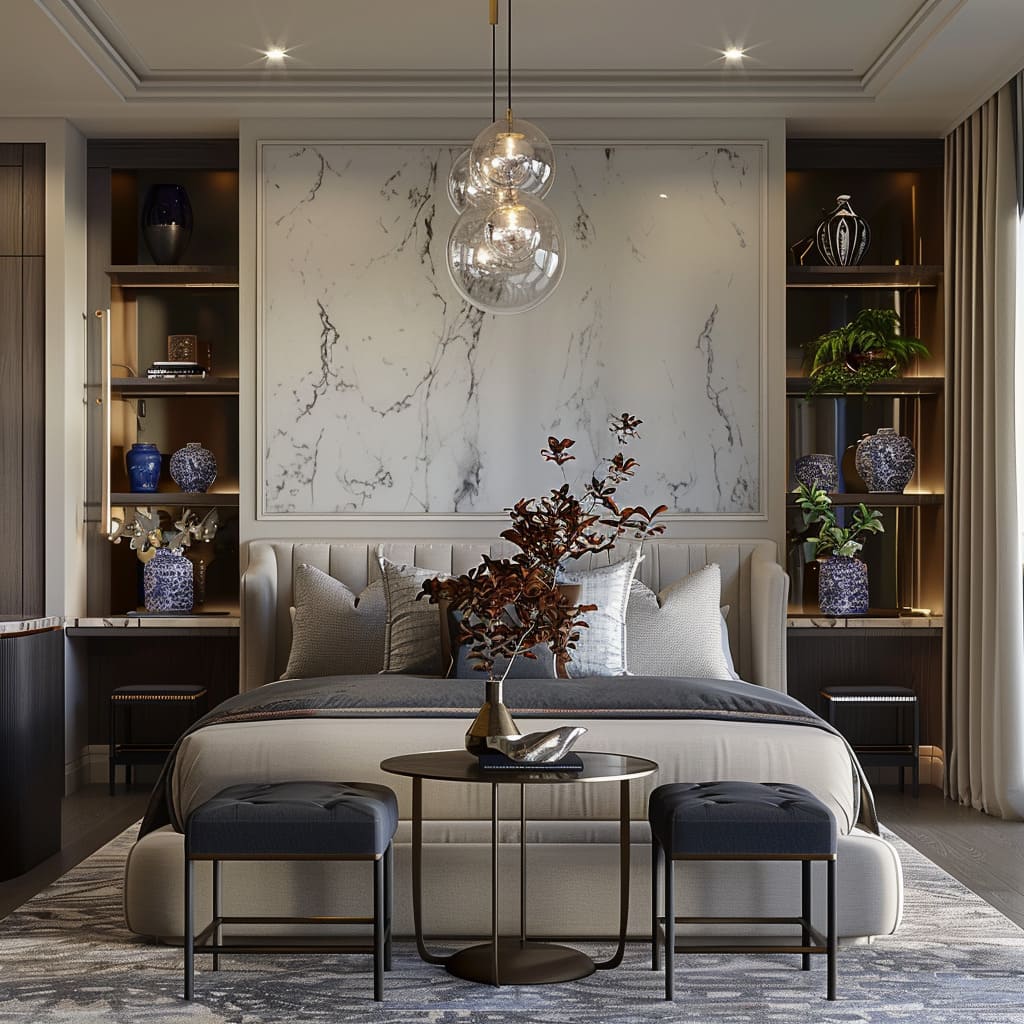Hallways and window bays are often overlooked in home design, regarded merely as passageways or small, unused corners. Yet, these spaces hold tremendous potential to enhance both the aesthetic and functional aspects of a home.
In many American homes, these areas can be transformed into stylish, useful spaces that contribute significantly to the overall interior design. This article will provide creative ideas for choosing console tables and designing cozy window bays to turn these neglected spaces into focal points of the home.
Whether you’re working with a narrow corridor or a bright window nook, the possibilities are numerous, offering opportunities to bring a fresh look to your living environment
Reimagining Hallways – The Pathway to Style and Function
Hallways are often considered utilitarian spaces, serving primarily as conduits between rooms. However, with a thoughtful approach, hallways can become extensions of the living area, reflecting the style and personality of the home.
Understanding the role of hallways in your home’s design can shift your perspective, encouraging you to think of these spaces as more than just transitional zones. A well-designed hallway can add depth, interest, and even functionality, serving as an additional area to display art, family photos, or storage solutions
To maximize the potential of a hallway, it is essential to consider both aesthetic and practical elements. One effective strategy is to use mirrors to create the illusion of a more expansive space.
Mirrors not only reflect light, enhancing brightness, but they also add depth, making narrow hallways appear wider. Additionally, installing textured wall panels can introduce visual interest, breaking up the monotony of flat walls and adding a layer of sophistication.
Vertical paneling, for instance, can draw the eye upward, giving the impression of higher ceilings, while fluted or ribbed textures provide a contemporary look that feels fresh and modern
How can the choice of console table materials influence the overall aesthetic and functionality of a hallway design?
The choice of materials for a console table significantly influences both the aesthetic appeal and functionality of a hallway design. Materials like wood, metal, glass, and stone each bring unique qualities to a space. For instance, a wooden console table can introduce warmth and a traditional or rustic feel, depending on the finish and style.
It can complement a hallway with light-colored walls and natural elements, creating a cozy, inviting atmosphere. Additionally, wood can offer a range of finishes—from polished and refined to raw and textured—allowing for versatility in design
In contrast, a metal or glass console table lends a sleek, modern look, ideal for contemporary or minimalist interiors. Metal tables, especially those with clean lines and geometric shapes, can add an industrial edge, while glass consoles offer a sense of openness and lightness.
Glass is particularly effective in smaller hallways as it doesn’t obstruct visual space, maintaining a feeling of spaciousness. However, glass requires regular cleaning and is less durable compared to wood or metal, making it a less practical choice for homes with children or heavy traffic areas
A stone console table introduces a natural, earthy element, adding texture and visual weight to the hallway. The rugged surface of materials like marble or granite can create a striking contrast against smoother walls or flooring.
Stone is incredibly durable and easy to maintain, making it a practical choice for busy hallways. However, its heavy appearance can dominate a small space, so it is better suited for larger hallways where it can serve as a bold focal point.
The material choice should align with both the practical needs of the household and the desired aesthetic outcome, balancing durability with visual appeal.
What are some advanced lighting techniques that can be used to enhance the depth and ambiance of a hallway beyond just using mirrors and ceiling lights?
Beyond mirrors and standard ceiling lights, advanced lighting techniques can dramatically enhance the depth and ambiance of a hallway. One effective approach is to use layered lighting, which involves combining different types of light sources to create a dynamic and versatile lighting scheme.
Wall sconces placed at regular intervals can add both functional lighting and decorative flair, providing soft, ambient illumination that highlights textures on the walls, such as vertical paneling or artwork
Integrated LED lighting is another sophisticated technique, especially when installed within architectural elements like crown moldings, baseboards, or even the floor. These lights can create a subtle glow that enhances the hallway’s architectural features, drawing the eye along the length of the corridor and making the space feel more expansive.
Cove lighting, where lights are concealed in a recess or a ledge, can provide indirect illumination that softly washes the walls and ceiling, creating a warm, inviting atmosphere without harsh shadows
Additionally, spotlighting specific features, such as a unique console table or an art piece, can create focal points and add visual interest. Adjustable spotlights can be directed to highlight different elements, allowing for flexibility in how the space is perceived.
Accent lighting, such as under-console lighting, can also be used to create a floating effect, adding depth and intrigue. These advanced techniques, when used in combination, can transform a hallway into a space that feels both luxurious and thoughtfully designed, enhancing both its aesthetic and functional qualities
How can the integration of natural elements, like plants and organic materials, transform the visual appeal and atmosphere of a hallway?
Integrating natural elements, such as plants and organic materials, can significantly transform the visual appeal and atmosphere of a hallway by introducing a sense of vitality and tranquility. Plants, whether potted or in vases, bring life into an interior space, adding color, texture, and a fresh, natural scent. They can soften the hard lines of architectural features and furniture, creating a more inviting and relaxed environment.
For narrow hallways, choosing plants with a vertical growth habit or placing hanging plants can add height and draw the eye upward, complementing vertical paneling or tall mirrors
Using organic materials like wood, stone, or wicker in furniture or decor adds warmth and a tactile quality that contrasts with more polished or industrial materials. For example, a console table with a raw, unfinished wooden top or a natural stone surface can introduce a rustic element that enhances the hallway’s charm.
Wicker baskets or rattan accessories placed under a console provide both storage and a cozy, earthy texture
Natural elements also connect the interior space to the outdoors, blurring the boundary between the inside and outside and fostering a sense of continuity. This is particularly effective in homes with nearby gardens or scenic views visible from the hallway windows.
The presence of natural elements can also improve indoor air quality and reduce stress, contributing to a healthier, more pleasant living environment. By incorporating plants and organic materials, a hallway can be transformed from a mere passageway into a lively, engaging space that enhances the overall home experience
The Power of the Console Table in Hallway Design
Console tables are more than just functional pieces of furniture; they are key to setting the tone in a hallway. Selecting the right console table depends largely on the size of your hallway and the style you wish to convey.
For narrow hallways, a slim, floating console can provide a surface for decor without taking up valuable floor space. Floating designs offer a sleek, minimalist look that works well in contemporary settings, providing an unobtrusive yet stylish feature that can support decor items such as vases, sculptures, or small lamps
In contrast, larger hallways can accommodate more substantial console tables that serve as both functional and decorative pieces. Sculptural designs with bold shapes can act as focal points, drawing attention and adding character to the space.
When choosing a console table, consider the material and finish—wooden tables bring warmth and a touch of classic elegance, while metal or glass options offer a more modern, industrial feel. Combining materials, such as a console with a wooden top and metal legs, can add an element of interest and sophistication
Styling your console table effectively is key to enhancing the visual appeal of your hallway. Start with a few select items that reflect your personal style—a striking vase with fresh flowers or a collection of art books can add personality and color. Layering items of varying heights, such as a tall lamp, a medium-sized decorative box, and a smaller sculpture, creates a balanced and visually engaging display.
Incorporate elements of nature, like a small potted plant or branches, to add texture and a touch of the outdoors. Remember, less is often more; keeping the arrangement uncluttered ensures the console table remains a statement piece
Creating Cozy Window Bays – A Stylish Nook in Your Home
Window bays offer a unique opportunity to create a cozy nook that enhances both the comfort and style of a home. These areas, often found in living rooms, bedrooms, or kitchens, can be transformed into versatile spaces for relaxation, reading, or even additional storage.
Designing a window bay involves careful consideration of comfort, functionality, and aesthetics.
To create a comfortable seating area, consider installing a built-in bench that maximizes the use of space while providing a sturdy base for cushions and throw pillows. Choose fabrics that are soft yet durable, in colors that complement the surrounding decor.
Adding a mix of pillows in different sizes, patterns, and textures can make the space inviting and visually appealing. If the window bay is used frequently for reading or relaxing, consider incorporating a small side table or built-in shelving for books, magazines, or decorative objects
Storage can be cleverly integrated into a window bay design, especially in smaller homes where every square foot counts. Drawers or cabinets built into the base of the bench provide a discreet place for storing items like blankets, toys, or seasonal decor.
Open shelving can also be added to display decorative items or houseplants, further enhancing the aesthetic appeal of the space. The use of natural elements, such as wicker baskets or wooden shelves, adds warmth and a touch of rustic charm, balancing the sleek lines of a modern window bay
Lighting is another critical element in designing a cozy window bay. Natural light streaming through the window creates a bright and airy feel, making the space ideal for daytime activities.
However, for evening use, consider adding a wall-mounted reading light or a table lamp that provides soft, ambient lighting. Layering different types of lighting allows you to adjust the atmosphere to suit the time of day or mood.
Enhancing Hallways and Window Bays with Lighting and Color
The right lighting can transform a hallway or window bay from a simple passageway or corner into a standout feature of the home. In hallways, recessed ceiling lights offer a clean and modern solution that provides ample illumination without taking up space.
Accent lighting, such as wall sconces or LED strips integrated into the ceiling or floor, can highlight architectural features or create a warm, welcoming glow.
Color plays a significant role in setting the mood of a hallway or window bay. Lighter colors, such as soft whites, beiges, and pastels, make spaces feel larger and more open.
These tones work particularly well in hallways, where they can enhance natural light and create a bright, airy feel. For window bays, consider colors that blend with the outdoor views, bringing a sense of continuity between the interior and exterior.
Introducing deeper, richer tones through accent walls or upholstery can add depth and a sense of coziness, particularly in larger or more open spaces
How do different textures, such as fluted wall panels or natural stone surfaces, enhance the visual impact of lighting in a hallway?
Different textures, like fluted wall panels and natural stone surfaces, can significantly enhance the visual impact of lighting in a hallway by interacting with light to create depth and interest. Fluted wall panels, for instance, have vertical grooves that catch and reflect light in unique ways, creating subtle patterns of light and shadow. When illuminated by recessed ceiling lights or strategically placed spotlights, these grooves can cast varying shades, adding a three-dimensional quality to the wall.
This effect can make a narrow hallway feel more dynamic, as the eye is naturally drawn to the play of light and shadow, enhancing the sense of movement through the space
Natural stone surfaces, on the other hand, offer a rough, uneven texture that scatters light rather than reflecting it smoothly. This scattering effect can add a warm, organic glow to a hallway, especially when lit with warm-toned LED strips or accent lights. Stone surfaces can create a cozy and intimate atmosphere, particularly in hallways that are designed to feel welcoming and serene.
The combination of these textures with different lighting techniques not only adds visual interest but also creates a tactile quality that can make the hallway feel more engaging and thoughtfully designed. By using lighting to highlight these textures, designers can transform simple wall treatments into standout features that contribute to the overall aesthetic of the home
What are the benefits of incorporating natural light sources in hallway designs, especially when combined with elements like window bays or reflective surfaces?
Incorporating natural light sources into hallway designs offers numerous benefits, particularly when combined with elements like window bays or reflective surfaces. Natural light can make a hallway feel more open, airy, and welcoming, helping to eliminate the often-dark, enclosed feel of narrow corridors. Window bays, strategically placed in hallways, allow sunlight to flood the space, enhancing visibility and creating a sense of connection with the outdoors.
This infusion of natural light not only brightens the hallway but also emphasizes the textures and colors of the interior elements, such as wall panels, flooring, and decor
Reflective surfaces, such as mirrors or glossy finishes, can amplify the effect of natural light, bouncing it around the hallway to reach areas that might otherwise remain dim. This creates a brighter, more uniform illumination throughout the space, reducing the need for artificial lighting during the day and creating a more energy-efficient environment. Furthermore, the combination of natural light with reflective surfaces can add depth and dimension, making the hallway appear larger and more expansive.
This effect is particularly valuable in small or narrow hallways where maximizing the sense of space is a priority. The interplay of natural light and reflective elements also enhances the aesthetic appeal, creating a visually engaging and dynamic atmosphere that changes throughout the day as the light shifts.
How can the use of specific color palettes in hallway and window bay designs influence the perception of space and mood, particularly in smaller or more confined areas?
The use of specific color palettes in hallway and window bay designs can greatly influence the perception of space and mood, especially in smaller or more confined areas. Lighter color palettes, such as soft whites, beiges, and pastels, are effective in making spaces feel larger and more open. These colors reflect more light, which helps to brighten the space and make it feel airy and expansive.
In hallways, where natural light might be limited, using light colors on the walls, ceiling, and flooring can help maximize the available light, creating an inviting and uplifting environment. These tones also create a neutral backdrop that allows other design elements, like console tables or artwork, to stand out without overwhelming the space
In contrast, darker color palettes, such as deep blues, rich greens, or warm taupes, can add a sense of coziness and intimacy to a hallway or window bay. These colors absorb more light, which can make a large hallway feel more contained and comfortable. When used strategically, dark colors can create dramatic visual effects, highlighting architectural features or creating focal points within the space.
For window bays, using deeper hues on upholstery or accent walls can create a warm, inviting nook that feels separate from the rest of the room, ideal for relaxation or reading. The choice of color palette should consider both the size and natural lighting of the space, aiming to enhance the desired mood and functionality of the hallway or window bay.
Practical Tips for US-Based Homeowners
Transforming hallways and window bays can be a straightforward and rewarding project, especially when the right strategies and elements are in place. For American homes, it’s essential to consider local architectural styles and the specific needs of the household. In many US homes, space may be limited, making multifunctional designs particularly valuable.
Built-in solutions, such as custom cabinetry or seating, are great ways to maximize functionality while maintaining a clean, cohesive look
When working on a budget, small changes can make a big impact. Consider repainting walls or refinishing floors to freshen up the space.
Repurposing existing furniture, like using an old desk as a console table or adding new hardware to a built-in bench, can give a new lease of life to these pieces without the cost of purchasing new items. Local thrift stores and flea markets can be treasure troves for unique decor pieces that add character and charm to hallways and window bays
Conclusion. Hallways and window bays are more than just passageways and unused corners; they are opportunities to add style, function, and comfort to your home.
By choosing the right console table, integrating clever storage solutions, and designing cozy, inviting window bays, you can transform these spaces into beautiful extensions of your living areas. Consider how these design strategies might apply to your own home, and take the first steps towards creating hallways and window bays that are both stylish and functional.
